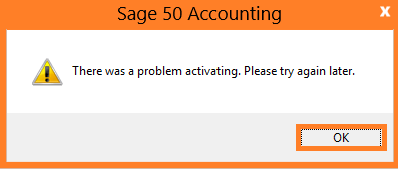 Zapier Automation – Automate Publishing. Free Your Time!
Zapier Automation – Automate Publishing. Free Your Time!
Fixing Sage 50: Step-by-Step Solutions for TLS Issues
Written by AccountsPro » Updated on: June 17th, 2025

Transport Layer Security (TLS) is an essential protocol designed to provide security and data integrity between two communicating applications over a network. For accounting software like Sage 50, TLS ensures that sensitive financial data is securely transferred between clients and servers, protecting it from unauthorized access or tampering.
However, TLS issues can arise, causing disruptions in software functionality and data exchange. These problems are often a source of frustration for Sage 50 users, especially when they are unaware of the causes or solutions. In this post, we'll explore TLS problems in Sage 50, their causes, and solutions to help you resolve these issues effectively.
What is TLS, and Why Is It Important in Sage 50?
TLS is a cryptographic protocol used to ensure that communication between two devices over a network is secure. It helps encrypt the data transferred between the client (Sage 50 user) and the server (Sage server) so that sensitive information, like financial data, is protected from hackers or malicious actors.
Sage 50 relies on TLS protocols to ensure secure connections during tasks like:
Downloading updates or patches
Sending and receiving emails
Accessing cloud services or shared data
Communicating with online banking services or payment processors
If TLS is not configured properly or an outdated version is used, these operations may fail, leading to various Sage 50 problems.
Common Causes of TLS Problems in Sage 50
1. Outdated TLS Version
Sage 50 requires TLS 1.2 or higher for secure communication. Many TLS problems arise when users or servers are running older versions of the protocol (e.g., TLS 1.0 or 1.1), which Sage no longer supports. In such cases, communication between Sage 50 and external services, like bank feeds or email servers, might fail.
2. Incorrect Windows or Network Configuration
Sage 50’s reliance on the system’s network configuration means that problems can arise when the Windows operating system or network settings are misconfigured. For instance, if the operating system or browser does not support or enable TLS 1.2, Sage 50 will be unable to use it for secure communications.
3. Expired or Invalid Security Certificates
TLS relies on security certificates to verify that the server or service being communicated with is legitimate. If these certificates have expired, are improperly configured, or are invalid for some reason, the TLS connection may fail.
4. Antivirus or Firewall Interference
Overzealous security settings in antivirus or firewall software can interfere with TLS connections. Certain security tools may block or scan encrypted communications, leading to TLS errors in Sage 50.
5. Incompatible Email or Cloud Settings
Problems with sending and receiving emails in Sage 50, such as when using cloud-based services, can be caused by incompatible email settings. Many email service providers now require TLS 1.2 or higher, and outdated Sage 50 installations may struggle to keep up with these security changes.
Symptoms of TLS Problems in Sage 50
Identifying TLS issues in Sage 50 can be tricky, but the following symptoms often point to problems with the TLS protocol:
Failed email communication: If Sage 50 cannot send invoices, statements, or other documents via email, a TLS issue may be involved, especially if you receive errors related to SSL/TLS certificates.
Bank feeds or payment services not working: TLS problems can cause interruptions in online banking services, making it impossible to sync bank data with Sage 50.
Inability to download updates: Sage 50 requires secure connections to its servers for downloading patches or updates, and TLS errors may prevent this from happening.
Cloud services issues: If Sage 50 is connected to cloud services for data storage or synchronization, TLS errors can disrupt this communication.
Solutions to Common TLS Problems in Sage 50
1. Ensure TLS 1.2 is Enabled in Windows
To avoid problems with older versions of TLS, ensure that TLS 1.2 is enabled in your operating system. Here’s how you can do it:
Open Internet Options from the Windows Control Panel.
Navigate to the Advanced tab.
Scroll down to the Security section.
Check the box for Use TLS 1.2 and ensure that older versions, like TLS 1.0 or 1.1, are unchecked.
Click Apply and restart your system.
This should help resolve most TLS version-related issues in Sage 50.
2. Update Sage 50 to the Latest Version
If you're experiencing TLS problems, it might be due to using an outdated version of Sage 50 that doesn’t support newer TLS protocols. Regularly updating your software ensures it is compatible with the latest security standards.
To update Sage 50:
Open Sage 50 and go to Help → Check for Updates.
Follow the prompts to install the latest updates.
3. Check Security Certificates
If the issue is related to expired or invalid certificates, ensure that the security certificates on your system and server are up to date. This might require working with your IT department or hosting provider to renew or install valid certificates.
To view or update security certificates:
Open Internet Options from the Windows Control Panel.
Go to the Content tab and click Certificates.
Check if the certificate for the website or server in question is valid and has not expired.
4. Review Firewall and Antivirus Settings
Sometimes, overzealous firewall or antivirus programs interfere with TLS connections. Temporarily disabling your security software can help identify if it is the cause of the problem. If the TLS issue resolves with the software disabled, consider adjusting the settings:
Add Sage 50 to the list of trusted applications.
Allow encrypted (SSL/TLS) traffic without scanning.
5. Update Email Server Settings
If you’re having trouble sending emails via Sage 50 due to TLS issues, check the settings for your email provider. Most major email providers now require TLS 1.2 for secure communication. Ensure that your Sage 50 email settings are configured to use SSL/TLS as required.
For example, in Sage 50:
Go to Maintain → Email Setup.
Verify that the outgoing email server is set to use SSL/TLS encryption.
Update the port number and server information as required by your email provider.
Best Practices to Prevent TLS Problems in Sage 50
Keep Sage 50 updated: Regularly update Sage 50 to stay ahead of TLS protocol changes and to benefit from patches that address known security issues.
Update your operating system and browsers: Ensure that your Windows operating system, browsers, and email clients are all updated to the latest versions that support TLS 1.2 or higher.
Check your security settings: Periodically review firewall, antivirus, and Windows security settings to ensure they’re not inadvertently blocking secure connections.
Monitor your email provider’s requirements: Email providers frequently update their security requirements, so ensure you’re aware of any changes that might affect Sage 50 email integration.
Conclusion
TLS problems in Sage 50 can disrupt workflows and prevent critical operations like sending emails, accessing banking feeds, or downloading updates. By understanding the common causes of TLS issues and applying the solutions provided above, you can minimize these disruptions and ensure secure communication in Sage 50. Keeping your software and systems updated, as well as monitoring security configurations, will help prevent TLS problems in the future.
Source: https://dictanote.co/n/1085377/
Note: IndiBlogHub features both user-submitted and editorial content. We do not verify third-party contributions. Read our Disclaimer and Privacy Policyfor details.
Men's Journal is a rugged and refined lifestyle adventure travel, food and drink Get in touch [email protected] to find out how we can help you reach everyday, affluent, and adventure seeking consumers on Men's Journal
Copyright © 2019-2025 IndiBlogHub.com. All rights reserved. Hosted on DigitalOcean for fast, reliable performance.








